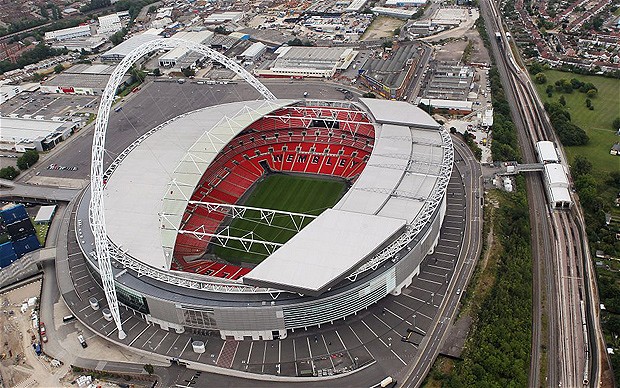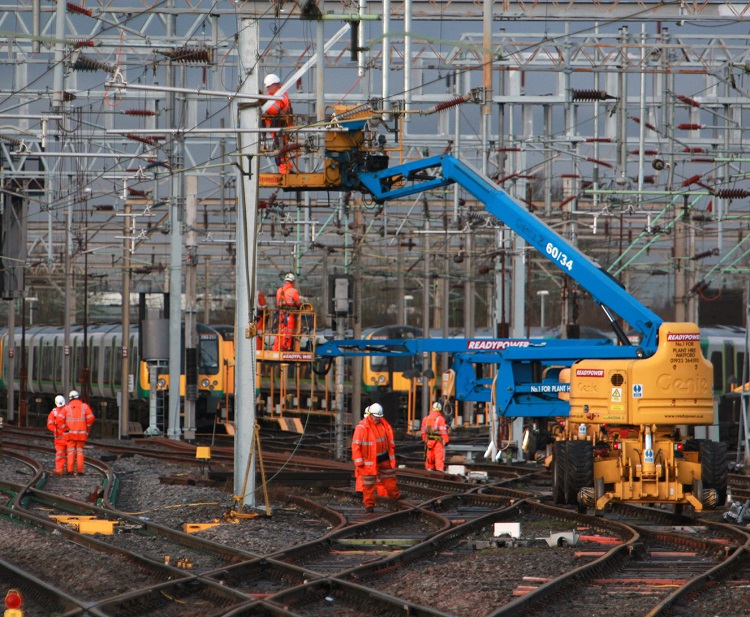
Wembley in Numbers
• At its peak, there were more than 3,500 construction workers on site.
• 4,000 separate piles form the foundations of the new stadium, the deepest of which is 35 m (115 ft).
• There are 56 km (35 mi) of heavy-duty power cables in the stadium.
• 90,000 m3 (120,000 yd3) of concrete and 23,000 tonnes (25,000 short tons) of steel were used in the construction of the new stadium
• 2,618 toilets
• 47 retail units
• 164 turnstiles
• 26 lifts
• 30 escalators
• 34 bars
• 8 restaurants
• 688 food and drink service points
• 98 kitchens
• The seats are spread over three tiers: lower 34,303, middle 16,532 and upper 39,165
General Stadium Facts
• The new Wembley reopened its doors in 2007
• The original Wembley Stadium was known as the Empire Stadium, and was built as the centrepiece of a British Empire Exhibition at the end of the First World War
• The stadium has a circumference of 1 km
• There are 107 steps in the trophy presentation route – the old stadium had 39 steps
• The new Wembley encloses 4,000,000 m³ inside its walls and under its roof. This is the equivalent of 25,000 double-decker buses or 7 billion pints of milk
• The deepest of the piles that form the foundations, at 35 metres, is as deep as the Twin Towers were tall
• The new pitch is four metres lower than the previous pitch
• The stadium’s pitch is enhanced by desso technology which combines synthetic grass with the real Wembley grass to strengthen the surface
• This system provides a consistently high standard playing surface at Wembley and enables the multi-use venue to host football, rugby, American football and music events
• The pitch is covered by specially designed protective panels for rock concerts which creates space for up 25,000 fans to stand
• Each of the two giant screens in new stadium is the size of 600 domestic television sets
• The total length of the escalators is the same as a 400 metre running track
• The Royal Box is in the traditional position – in the middle of the north stand – as in the old Wembley Stadium
The Arch and the Roof
• The most striking, highly visible feature of the stadium is 133 metre tall arch that sits above the north stand
• With a span of 315 metres, the arch is the longest single span roof structure in the world and is visible right across London
• With a diameter of 7.4 metres the arch is wide enough for a Channel Tunnel train to run through
• A representative from every county in England was involved in the construction of the arch
• The stadium roof rises to 52 metres above the pitch. This compares to the 35 metres tall Twin Towers of the old stadium
• The roof is over 11 acres, of which four of the acres are retractable
• The stadium has a sliding roof design which allows the pitch to be exposed to direct sunlight and ventilation whilst ensuring that spectators are covered
• The arch supports all of the weight of the north roof and 60 per cent of the weight of the southern side
• The arch ensures that there are no pillars in the new stadium which could obstruct the views of fans
The Seats
• The stadium has 90,000 seats with no obstructed views
• There are 310 wheelchair spaces and 400 press seats
• The rows of seating, if placed end to end, would stretch 54 kilometres
• There is more leg room in every seat in Wembley Stadium than there was in the Royal Box of the old stadium
• The stadium was designed with stands that are higher and closer to the pitch than the original stadium and with better uninterrupted views


